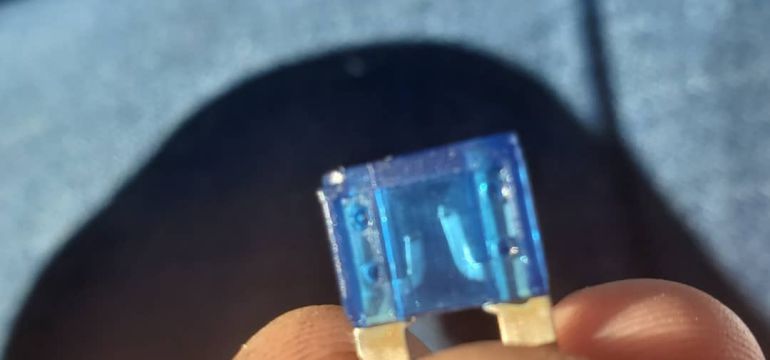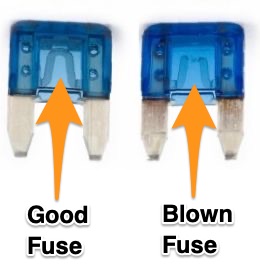Winter is knocking at your door, but the furnace refuses to greet it. The power to your furnace unit simply isn’t turning on. This can spell major problems as the temperatures continue to dip lower and lower with each passing hour. You may suspect a blown fuse and wonder what you can do to replace it or prevent it from occurring again in the near future.
If you suspect that the fuse on your furnace has blown, here are the next steps that you need to take to remedy the situation.
How to Check Your Furnace Fuse?

Before you head out to the local home improvement store to pick up a new fuse, you should be absolutely certain that you are addressing the correct problem. Knowing how to check your fuse is a relatively simple process that takes just a few minutes of your time.
Start by making sure that you turn off all electricity running to your unit. This can be done at the main electrical panel or the subpanel used specifically for your furnace.
Some fuses will have a glass display window with a metal bar running through. Some plastic fuses will have the same wire, but it is only visible when viewed from the side.
On either type of fuse, you can tell that it is blown when the wire is broken.
You may also need to use your multimeter to check if your fuses are blown. You can quickly determine by checking resistance with a multimeter. A good fuse will have nearly zero ohms of resistance, if the fuse is blown there will be no reading.
Once you know how to check your furnace fuse, you can replace it easily. However, you need to make sure to get the same wattage ratings as before. From here, you can follow the instructions in your owner’s manual for how to replace the fuse.
The Furnace Fuse Keeps Blowing
If you fix the fuse once and it immediately blows again, you have a much larger problem on your hands that seriously needs to be addressed. This can be the sign of an electrical problem, putting you at risk of a serious fire. You need to find the root cause of the blown fuse on the furnace circuit board before you cause damage to the unit. Here are a few of the most common problems:
Strain:
This is one of the most common reasons why the furnace fuse is blown. The furnace requires a lot of electricity to run, and your home may not have the means to support it or there could be a short in the system. A professional should be called to inspect the system if you have reset the circuit breaker and replaced the fuse but are still encountering the same issue.
Faulty Parts:
Sometimes, the blown furnace fuse is simply a sign of a much larger issue with the furnace. A faulty transformer or a malfunctioning thermostat wire can all be common culprits for fuses that continue to blow. Loose wires, in general, are often responsible for blown fuses. They can come loose over time due to the natural vibrations of the unit, so make sure to check the connections.
Low Wattage Fuse:
Perhaps the fuse that is installed in your furnace is not the correct wattage. If you have had to replace them in the past, you might have selected a wattage that was too low for the demands of the furnace. For example, a 3-amp furnace fuse simply may not be high enough. Try installing a fuse with a higher rated one to see if that will remedy your problem.
Clogged Filter:
How many people are guilty of neglecting their air filters? Over time, these filters can become clogged with dust, dirt, pet dander, and other debris. All of these particles enter into the blower motor and cause the fuse to burn out. You may be able to replace the fuse, swap out your air filters, and fix the problem immediately. Of course, you may have burnt out the blower motor which can also result in a blown fuse.
Water:
Is there any possible chance that your furnace has come into consistent contact with water? The fuse is bound to blow if it encounters even a few drops of water from another source. Inspect the area around your furnace for potential leaks.
With each of these problems, you can always try to replace the fuse on your own first. This is a great first step that could save you a lot of money. After all, replacement fuses are only a few dollars at home improvement stores. However, you may want to seek the help of a professional if the next set of fuses blows relatively quickly also. The potential risk and damage that could result from regularly changing the fuses simply isn’t worth it.
Finding the Cause
If your furnace fuse blows when the heat turns on, you have a major problem on your hands. You need to remedy the issue with your blown fuse and find the underlying cause. Playing detective can be a little tricky, though.
Make sure that you thoroughly investigate all of the potential causes and seek professional help when necessary. While it may be an expensive investment, professional help may be able to prevent large electrical fires from sprouting up.
- What to Do if Your House Smells Like Gas but There’s No Leak - February 6, 2023
- Why Is There a Burning Smell Coming From My Vents? - August 16, 2022
- How to Remove the Musty Smell From Your Air Conditioner - August 16, 2022


Art
Thursday 17th of November 2022
My furnace fuse burns out after 2 to 3 hours of use. I have call a pro and they replace the fuse, check the wiring and the parts and they leave because the fuse does not burn right away. After a few hours the fuse is burn again. Thanks
Harry
Thursday 29th of December 2022
@Art,
Try a pop fuse or pop breaker, 3 amp for furnaces. That way, if it blows, all you do is press the plunger button on the pop fuse. I have the same problem so I used two long wires on the pop fuse so that it's outside of the furnace and can be reached easily. Most furnaces use 3 amp fuses . You can try a higher amperage also, but don't go too high or you may burn the transformer or something even more costly. You can also purchase a transformer with a built in circuit breaker. You may also have something shorting out in the thermostat or in the electrical circuit.
Cheers mate!